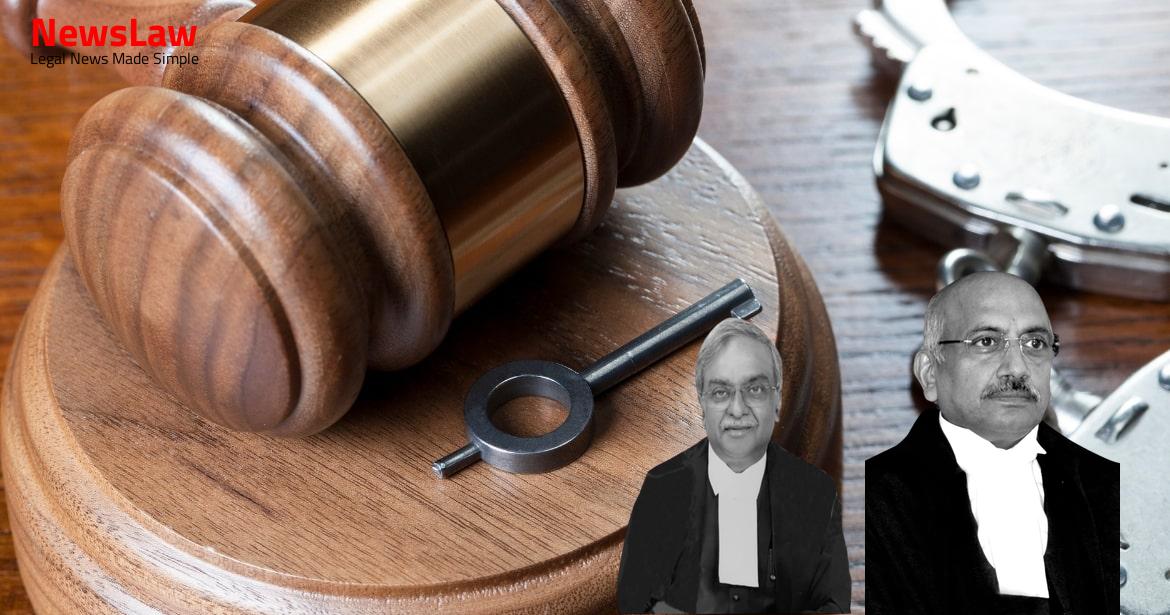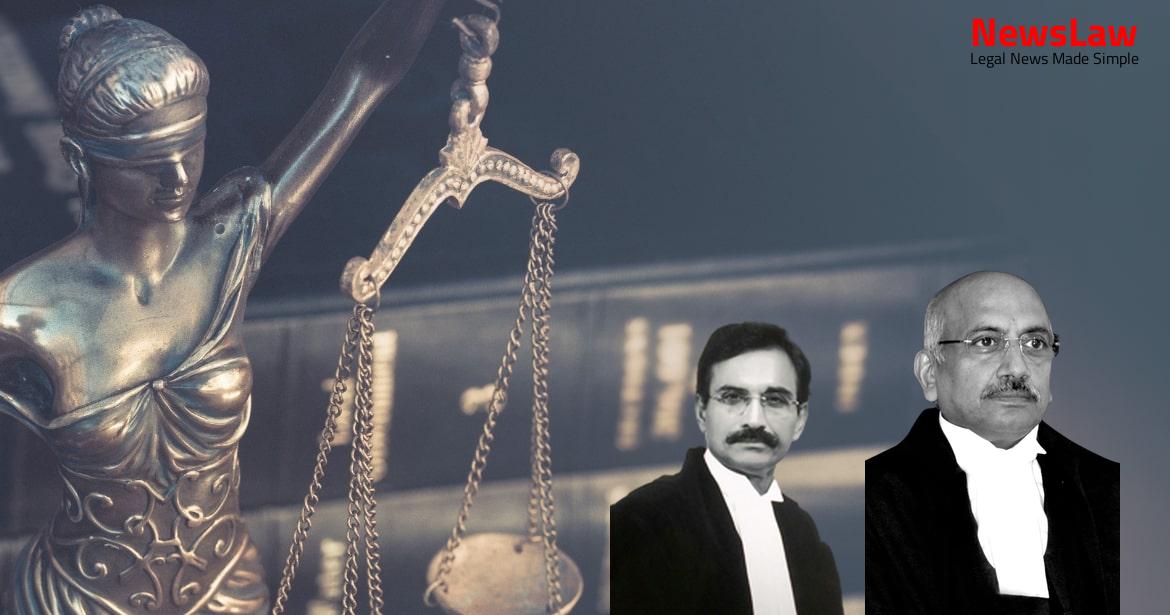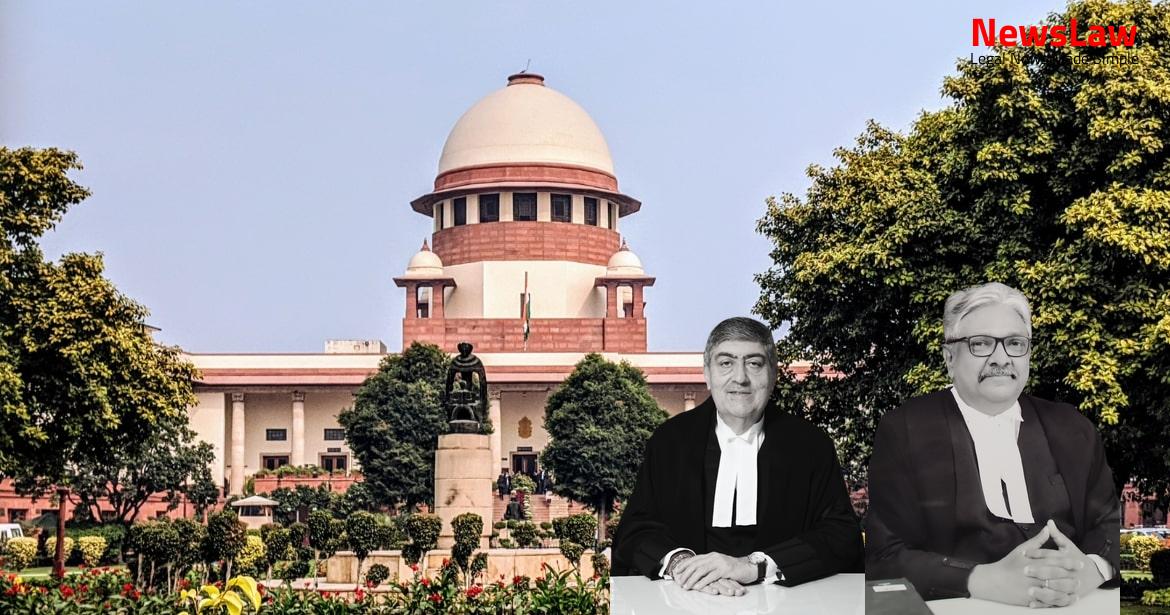The appellants call in question a common judgment and order dated 10 January, 2022 passed by the Chhattisgarh High Court at Bilaspur, whereby 3 (three) writ petitions [WPCR 88 of 2020, WPCR 154 of 2020 and WPCR 206 of 2020] were disposed of.
Upon the complaint being received, the Chief Minister by a handwritten order directed the Chief Secretary of the State to have the complaint enquired into by the Economic Offences Wing (EOW). Be that as it may, vide a forwarding letter dated 21 October, 2019, the complaint was forwarded by the General Administration Department of the State (hereafter ‘GAD’, for short) to the Economic Offences Wing/Anti-Corruption Bureau (hereafter ‘ACB/ EOW’, for short) for the purpose of conducting inquiry into the allegations leveled therein. In such writ petition, AS urged the court to pass an order for production of the entire records pertaining to the letter dated 21 October, 2019 for its perusal, for quashing the said letter as well as any consequential step/action taken by the State including P.E.No.35/2019. On 15 April, 2020, WPCR 206/2020 was jointly instituted by AS and YS seeking appropriate order for listing of WPCR 88/2020 and WPCR 154/2020 for final hearing immediately upon resumption of normal functioning of the Court (which was then curtailed due to the pandemic caused by Covid-19) and also for an order declaring the action of the ACB/EOW in directing HDFC Bank Ltd., respondent no.5, to put a hold on the funds in the salary account of AS, as void and illegal.
Faced with such an order, the State filed an application seeking exemption to produce the case diary and the figures in tabulated form as well as applied for vacation of an earlier order dated 28 February, 2020 whereby the ACB/EOW was restrained from taking coercive steps against AS. Since this Court while hearing WPCR
No 88 of 2020 has already quashed the FIR bearing No 09/2020 registered against the petitioners at Police Station- EOW/ACB, District- Raipur (C.G.), therefore, the relief sought in this petition has lost its significance and the bank account No 50100 28338 9868 of petitioner
Also Read: https://newslaw.in/supreme-court/appellant-convicted-for-culpable-homicide-not-amounting-to-murder/
No 1 shall inoperative (sic) after quashing the FIR in WPCR
No 88 of 2020, therefore, no further direction is required to be passed.” Since, the High Court has quashed the FIR and we are called upon to examine the legality and propriety of the impugned judgment, we propose to refer to the material portions of the FIR after noting the rival contentions. Tapan Kumar Singh, he contended that a first information report is not an encyclopedia which must disclose all facts and details relating to the offence reported; what is of significance is that the information given must disclose the commission of a cognizable offence and the information so lodged must provide the basis for the police to suspect the commission of a cognizable offence. Sibal, when a first information report could be lodged on the basis of suspicion, the High Court in the present case erred in law in quashing the FIR on the ground that it was based on “probabilities”.
However, the Investigating Officer could not proceed with the investigation effectively and meaningfully in view of the restraining orders passed by the High Court resulting in the investigative process being aborted. Sibal, thus, prayed that the impugned judgment and order of the High Court be set aside and investigation into the FIR be permitted to be taken to its logical conclusion.
Hegde that the High Court conducted a mini-trial while arriving at a conclusion that no offence against AS and YS has been made out in the FIR which, this Court has repeatedly held, cannot be conducted in proceedings for quashing of a first information report.
were next cited for highlighting the categories of cases where inherent jurisdiction can and should be exercised by the high courts to quash proceedings; however, having regard to the facts and circumstances of the case presented before the High Court by AS and YS, Mr. Hegde further relied on the decision of this Court in Rajesh Bajaj Vs. That apart, the preliminary inquiry carried out before registration of the FIR has revealed disproportionate assets to the tune of 20% of the income of AS; hence, it was not an appropriate case where the power to quash the FIR should have been exercised. Initially a departmental inquiry was initiated against YS vide an order dated 10 May, 2019 and no sooner had the High Court by an order dated 21 October, 2019 granted interim protection to YS, further action was taken to initiate a preliminary inquiry against AS and YS on 11 November, 2009. Jethmalani’s endeavor to show that the investigating agency in that case had set out/specified the extent of disproportionality in a tabular form, in rupees and percentage, in the first information report therein. Jethmalani that a first information report based on sheer conjectural possibility of finding some more assets in future is wholly impermissible. Passages from the impugned judgment were referred to, to show how the High Court was right in returning the finding that the FIR did not disclose any offence rendering it liable to interdiction. Hegde canvassed that there are no pleadings to this effect in the writ petition filed before the High Court and, therefore, a new case ought not to be allowed to be set up de hors the pleadings.
Jethmalani to file short written notes of arguments within a week together with a few other relevant documents which he intended to file though not part of the pleadings before the High Court or this Court. Vikas Singh, learned senior counsel mentioned the criminal appeals and prayed for recall of the order reserving judgment on the ground that an application for directions was in the process of being filed by AS and YS and that the same ought to be considered before the judgment on these appeals is pronounced.
Also Read: https://newslaw.in/supreme-court/ownership-dispute-commissioners-order-and-revenue-documents/
Since the materials brought on record by such application are sufficient to drive home the conclusion that political vendetta is the real cause for registration of the FIR, to tarnish the reputation of AS and YS, it has been urged that all the evidence ought to be summoned by this Court for just disposal of the present proceedings.
Docs, Chats show how prime accused was himself’managing’ NAN scam investigation, Baghel issued hitlist’ to implicate Raman Singh, others’ ) in the web news portal www.opindia.com and direct further hearing in the present case; and/or b) Direct to summon the records pertaining to the ‘WhatsApp’ Chats relating to the conspiracy to implicate the Respondent Nos. From bare perusal of the FIR, the allegation of disproportionate income is made out or not, it is expedient for this Court to examine whether from bare perusal of the contents of FIR, offence said to have been committed is made out or not, then only the FIR can be quashed by this Court. The FIR further states that there is possibility of having various properties in the name of the petitioner and his wife. The FIR is not disclosing the fact that even not disclosing the APR with the Government what disproportionate income, the petitioner has earned during the period from 2004 to 2018.” Confined to what the High Court has held in the impugned judgment and order, the short question that emerges for a decision is whether the High Court was justified in its interference with the FIR
Jethmalani and the contents of the application for directions filed on behalf of AS and YS is, whether and to what extent would a court exercising power under Article 226 of the Constitution or section 482 of the Code of Criminal Procedures (hereafter ‘Cr. It is not now limited to the spheres of activities of governance; regrettably, responsible citizens say it has become a way of one’s life. More often than not, these are botched and assume the proportion of bigger scams than the scams themselves.
Although an appropriate legislation is in place to prevent the cancer of corruption from growing and developing, wherefor maximum punishment by way of imprisonment for ten years is stipulated, curbing it in adequate measure, much less eradicating it, is not only elusive but unthinkable in present times. A public servant is said to commit the offence of criminal misconduct if (a) he dishonestly or fraudulently misappropriates or otherwise converts for his own use any property entrusted to him or any property under his control as a public servant or allows any other person so to do, or (b) he intentionally enriches himself illicitly during the period of his office. being a (i) public servant, (ii) if at any time during the period of his office, he has been in possession, by himself or through any person on his behalf, of pecuniary resources or property disproportionate to his known sources of income, then (iii) he is enjoined to satisfactorily account for the same. Act and the allegation is proved at the trial, the concerned public servant is liable to punishment under sub-section (2) thereof. In regard to a case of the type under consideration, particularly when the FIR has been registered pursuant to a preliminary inquiry into the complaint of US and is at its nascent stage, it is in course of an investigation that materials are required to be collected and based on such requisite evidence of possession of pecuniary resources or acquisition of assets or property disproportionate to the known sources of income of the concerned public servant that a police report under section 173(2), Cr. During the tenure of his office under his employer, the public servant might not have even been suspected of being in possession of pecuniary resources or assets disproportionate to his known sources of income. Act and the above principles that we need to read the FIR and the preceding complaint to assess whether any cognizable offence is made out against AS and, a fortiori, against YS, his wife. Moving forward, it is found on perusal of the FIR that although not specifically mentioned, 2004 to 2018 is the “check period” during which AS and YS have acquired property disproportionate to their known sources of income. and Courtesan Consulting Private Limited, respectively, in the bank account of YS and such financial transactions involving huge amounts prima facie appeared to be conspicuous requiring minute scrutiny. 3,33,71,290, in comparison to which, it was found that immensely disproportionate expenses have been made by non-applicant Aman Singh during the said period in his name and in the name of his wife and dependent members, which was prima facie found to be an offence under Sections 13(1)B, 13(2) of the Prevention of Corruption Act, 1988 as amended by Amendment Act, 2018 and Section 120(B) of the Indian Penal Code.” It is true that the FIR could have been drafted better. However, nothing significant turns on the inept drafting of the FIR in this case since it does make out a case of cognizable offence having been committed by AS and YS. The High Court was of the opinion that (i) the FIR clearly demonstrates that the same “is based on probabilities with regard to disproportionate income”, (ii) the FIR “is silent with regard to the quantum of disproportionate income, which is the paramount factors for involving any person in implicating any person for commission of offence under Section 13(1)(b), 13(2) of the Act, 1988”, (iii) these “basic ingredients are not reflected from the bare perusal of the FIR”, (iv) the “FIR nowhere discloses commission of any offence with definite facts and figures” and (v) “offence under Section 13(1)(b), 13(2) of the Act, 1988 is not made out”. We may, in this regard, profitably refer to the decision of this Court while dealing with a case under the P.C. Even if the information does not give full details regarding these matters, the investigating officer is not absolved of his duty to investigate the case and discover the true facts, if he can.” Thus, it being the settled principle of law that when an investigation is yet to start, there should be no scrutiny to what extent the allegations in a first information report are probable, reliable or genuine and also that a first information report can be registered merely on suspicion, the High Court ought to have realized that the FIR which, according to it, was based on “probabilities” ought not to have been interdicted. Having perused the CBI Circular, what we find is that the same provides the methodology to guide registration of a first information report in relation to disproportionate assets cases. Evidently, the FIR in the present case was registered on 25 February, 2020 whereas the CBI Circular was issued on 12 November, 2020, almost 9 (nine) months after the FIR was registered, and adopted by the State almost a year later.
While amending the writ petition and challenging the FIR and seeking an order for its quashing, AS alleged in the application for amendment as follows: “That the action taken by the Chief Minister on the complaint addressed to him is patently contrary to law and in view of the said CM’s declared public hostility towards the petitioner as set out elsewhere in the petition, discloses malice” (paragraph 9.29). “The lodging of the FIR during pendency of the hearing of the present writ petition is further evidence of mala fides on part of Respondent State” (paragraph 9.32). For reasons more than one, we are inclined to the view that the writ petitions before the High Court would not have succeeded even if the plea of mala fide were advanced and accepted as a ground of assail to the FIR, based on what has been laid down in Bhajan Lal (supra).
Having regard thereto, since the incumbent holding the office of Chief Minister of the State against whom mala fide is alleged is not on record, we are loath to attach any importance to the allegations of mala fide even if there be any. In such a case, should the allegations of mala fide be of some prima facie worth, would pale into insignificance if sufficient materials are gathered for sending the accused up for a trial; hence, the plea of mala fide may not per se form the basis for quashing the first information report/complaint. Needless to observe, the first information report in a disproportionate assets case must, as of necessity, prima facie, contain ingredients for the perception that there is fair enough reason to suspect commission of a cognizable offence relating to “criminal misconduct” punishable under the P.C. Having regard to what we have observed above in paragraph 49 (supra) and to maintain probity in the system of governance as well as to ensure that societal pollutants are weeded out at the earliest, it would be eminently desirable if the high courts maintain a hands-off approach and not quash a first information report pertaining to “corruption” cases, specially at the stage of investigation, even though certain elements of strong-arm tactics of the ruling dispensation might be discernible. Although what would constitute the special features has necessarily to depend on the peculiar facts of each case, interference could be made in exceptional cases where the records reveal absolutely no material to support even a reasonable suspicion of a public servant having intentionally enriched himself illicitly during the period of his service and nothing other than mala fide is the basis for subjecting such servant to an investigation.
Case Title: THE STATE OF CHHATTISGARH Vs. AMAN KUMAR SINGH (2023 INSC 189)
Case Number: Crl.A. No.-000646-000648 / 2023



